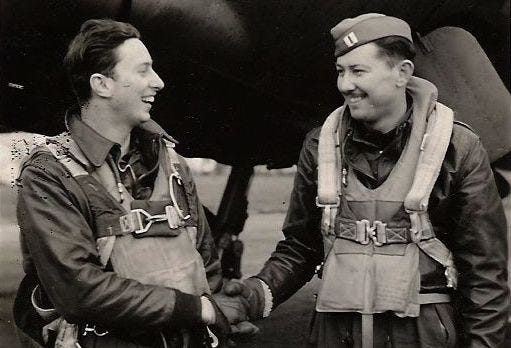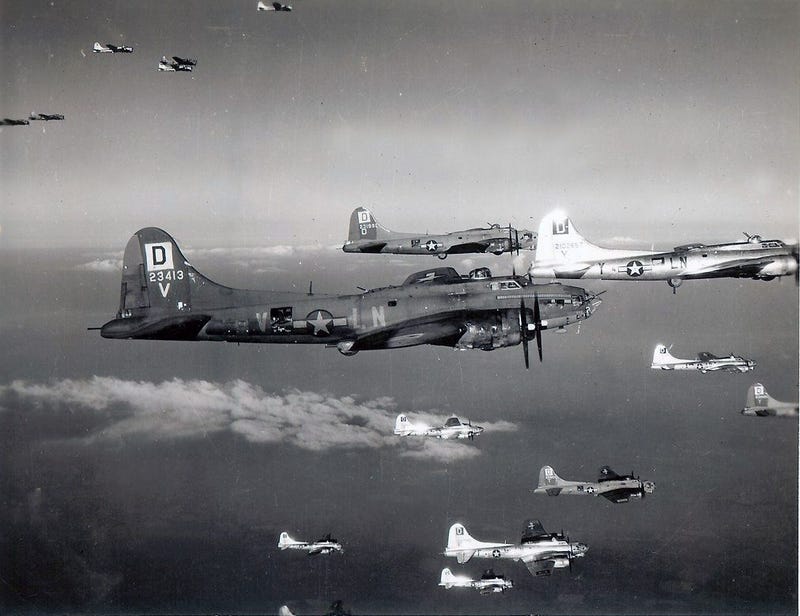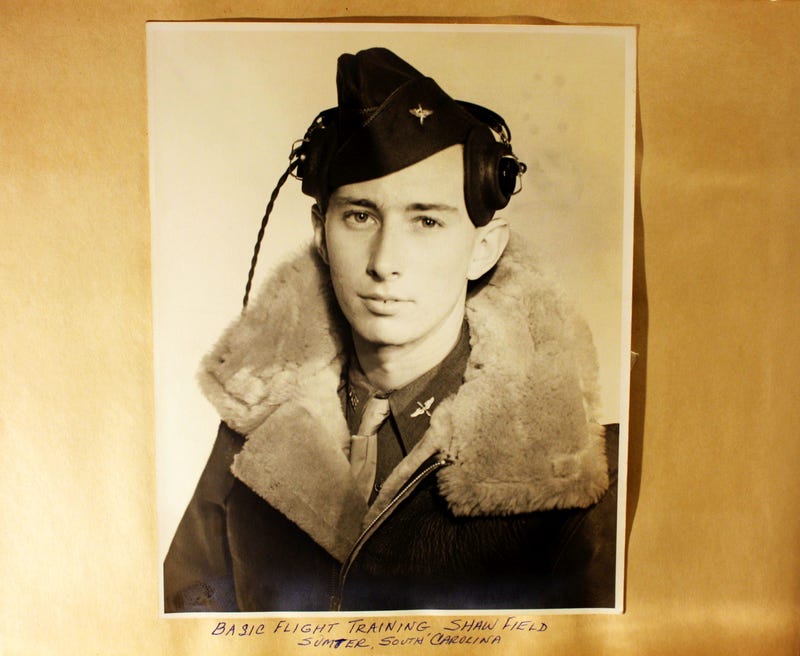
John Luckadoo had wanted to fly since he was in High School. Together, with his childhood friend Sully, he tried to join up with the Royal Canadian Air Force but because they were underage, they required parental consent. The U.S. Army Air Corps required two years of college. John didn't have college and his father thought the war in Europe was a fool's errand.
Meanwhile, Sully's mother blessed off despite his father having died in a mustard gas attack during World War I. But it wasn't long until everything changed for America. Pearl Harbor was bombed and this time Luckadoo wasn't turned down for flight school.

After completing his training, Luckadoo was assigned to the 100th Bomb Group to fly the B-17 bomber just as the unit was deploying to England to begin the air war against the Third Reich. The pilots and crew of the B-17s soon realized they would be ordered to conduct air raids in broad daylight.
"This was a stark realization that in combat that we would be expected to go out in a mass formation in broad daylight at high altitude in unpressurized aircraft to bring the Nazis to their knees by bombing Europe," he told Connecting Vets.
Taking off on his first mission, it became apparent that there were four main factors they would be fighting against. First was their own fear, followed by enemy anti-aircraft fire, Nazi fighter jets, and, finally, the extremely cold temperatures found at 25,000 to 29,000 feet.

"Strangely and ironically enough even at altitude, you would find yourself perspiring profusely, which instantly freezes and blocks your oxygen flow. We would be breaking ice crystals in our oxygen mask with one hand and flying with the other," Luckadoo explained.
In between missions he didn't get a lot of time off but did eventually manage to link up with his old friend Sully who was now flying Spitfire fighters for the Canadians. Luckadoo took him up in a B-17 to which Sully remarked, "Buddy this ain't flying you ain't nothing but a truck driver!"
Sully later had Luckadoo fly his Spitfire, which he remembers as a near-death experience because it was such a different experience than piloting a bomber.
One day, Luckadoo flew one of his unit's bombers over to the airfield where Sully was now flying the Hawker Typhoon fighter bomber. As he landed, he noted the still-smoldering wreckage of a plane on the side of the runway. Hopping out of his bomber, he asked to see Sully but was told he needed to report to the unit's commanding officer instead.
Standing at attention in the CO's office, he asked Luckadoo if he knew Sully. "I grew up with him," he responded. The CO asked if he had seen the wreckage on the side of the runway. "We lost Sully yesterday afternoon," the Canadian officer informed him. Sully was buried with full military honors. His death and funeral stuck with Luckadoo more so than the loss of any other airmen he knew during the war.

"In an air war you just have an empty bunk after losing a guy," he said. "No time to acknowledge their loss." But in this case, there was a body to bury, a funeral to be had, and with it a type of closure and knowledge that a friend had been lost.
Meanwhile, the air war over Europe was getting increasingly tense. Every time the B-17 bombers crossed the English Channel in formation, they would be harassed by Nazi fighter jets. Luckadoo recalled numerous close shaves, including one time when one of the engines on his plane was blown out. The longer the war went on, and the deeper they pressed into Germany, the more aggressive the Nazis got.
"They became so desperate they were taking old Messerschmitt 109s and put student pilots in them with just enough fuel to get above bomber formations, run out of fuel and dive across us and try to cut the tails off our bombers and try to bail out and survive," Luckadoo described. "That is how desperate and aggressive they were."
After 25 missions, Luckadoo was finally rotated back home. For fifty years he never spoke about the war to anyone. These were uncomfortable, difficult memories. But being invited to be a guest speaker at an air symposium decades later began to crack the window to some old memories open, and at the urging of his wife of now 71 years, he teamed up with author and journalist Kevin Maurer to write his story.
The book is called "Damn Lucky: One Man's Courage During the Bloodiest Military Campaign in Aviation History" and hits bookstores across the country tomorrow.



